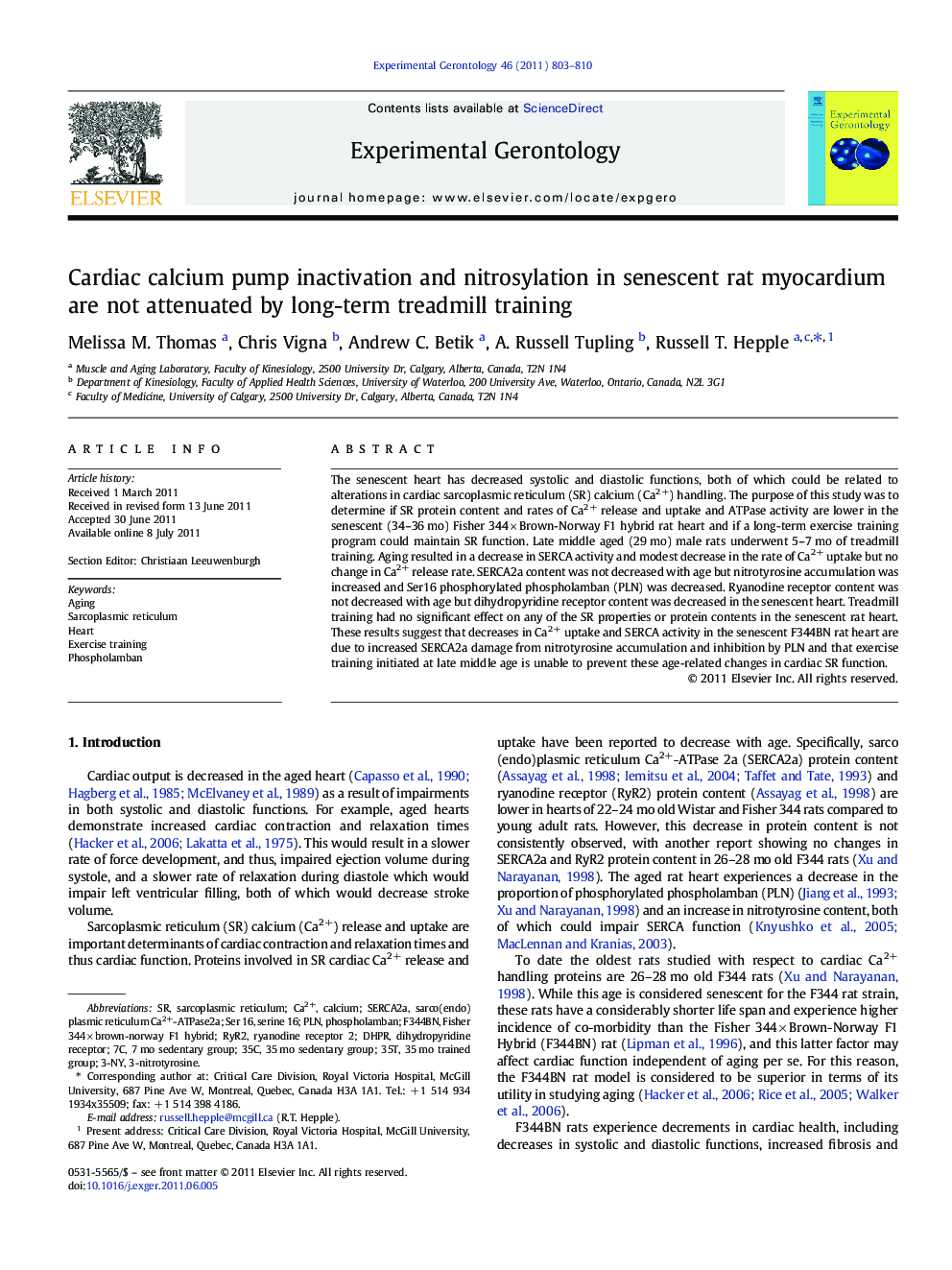| Article ID | Journal | Published Year | Pages | File Type |
|---|---|---|---|---|
| 1906831 | Experimental Gerontology | 2011 | 8 Pages |
The senescent heart has decreased systolic and diastolic functions, both of which could be related to alterations in cardiac sarcoplasmic reticulum (SR) calcium (Ca2+) handling. The purpose of this study was to determine if SR protein content and rates of Ca2+ release and uptake and ATPase activity are lower in the senescent (34–36 mo) Fisher 344 × Brown-Norway F1 hybrid rat heart and if a long-term exercise training program could maintain SR function. Late middle aged (29 mo) male rats underwent 5–7 mo of treadmill training. Aging resulted in a decrease in SERCA activity and modest decrease in the rate of Ca2+ uptake but no change in Ca2+ release rate. SERCA2a content was not decreased with age but nitrotyrosine accumulation was increased and Ser16 phosphorylated phospholamban (PLN) was decreased. Ryanodine receptor content was not decreased with age but dihydropyridine receptor content was decreased in the senescent heart. Treadmill training had no significant effect on any of the SR properties or protein contents in the senescent rat heart. These results suggest that decreases in Ca2+ uptake and SERCA activity in the senescent F344BN rat heart are due to increased SERCA2a damage from nitrotyrosine accumulation and inhibition by PLN and that exercise training initiated at late middle age is unable to prevent these age-related changes in cardiac SR function.
► We examined the effect of exercise training starting at late middle age on SR function in senescent heart. ► SR Ca2+ uptake was decreased but SERCA2a content was unchanged in senescent heart. ► Heart nitrotyrosine content increased and phosphorylated PLN decreased with age. ► Exercise training did not reverse any of the changes in the SR in senescent heart.
